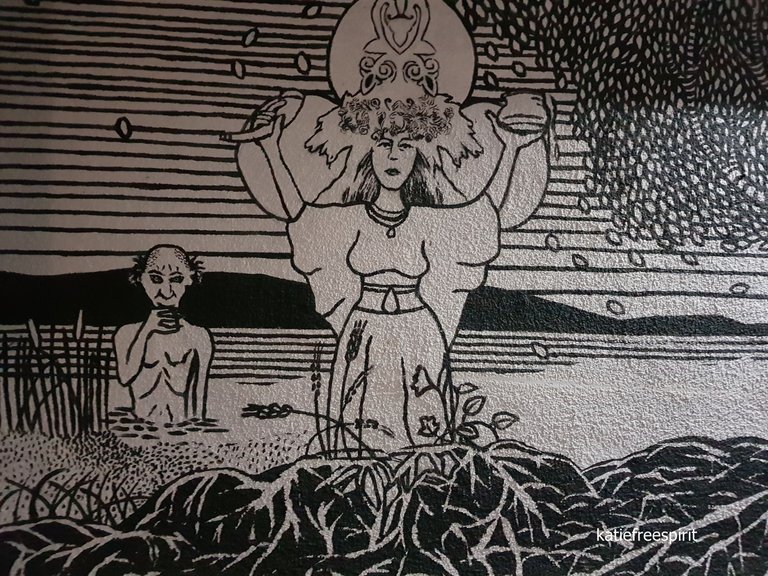
Tonight I was walking around the Mokotów district in Warsaw, I ventured into unknown streets and at some point I saw such cool murals. I entered the unfamiliar gate and noticed that the paintings were everywhere - both on the walls and on the pillars of the block, as well as on its main facade. The murals looked interesting, and next to the pictures there was a legend with the names of the characters that appeared on them, they were, among others Perun, Weles, Leszy, Mokosz, or a goddess ... So Slavic deities were painted on the murals.
Dzisiaj wieczorem spacerowałam po warszawskim Mokotowie, zapuściłam się w nieznane mi uliczki i w pewnym momencie moim oczom ukazały się takie fajne murale. Weszłam w nieznajomą bramę i zauważyłam, że malowidła są wszędzie - zarówno na ścianach jak i na filarach bloku, a także na jego głównej elewacji. Murale wyglądały ciekawie, a obok obrazków zamieszczona była legenda z nazwami postaci, które na nich występowały, byli to m.in. Perun, Weles, Leszy, Mokosz, czy boginka... Czyli na muralach namalowano słowiańskie bóstwa.
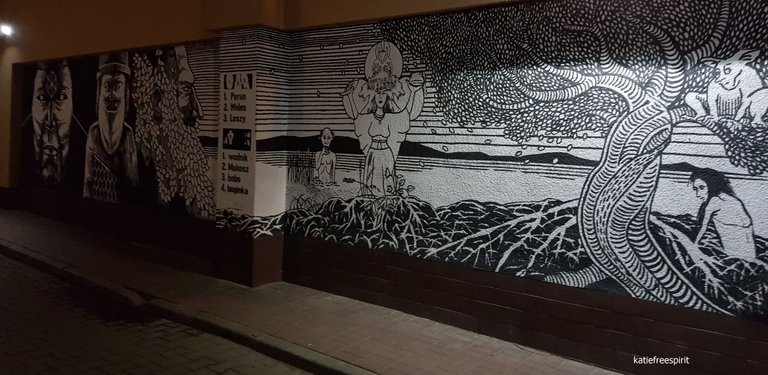
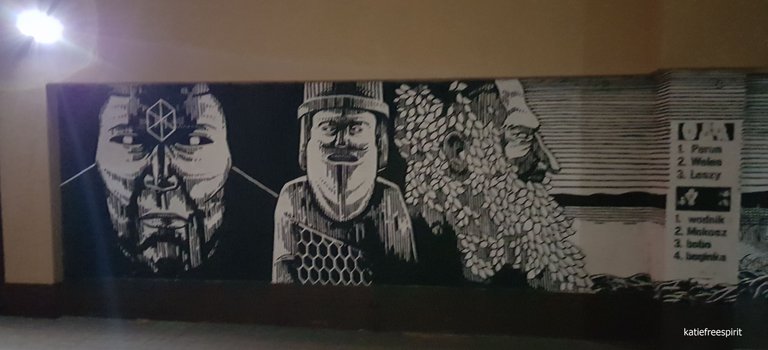
But not only that, apart from the portraits of deities, the murals featured a lot of plant motifs, including trees with massive roots, as well as shrubs and leaves. I felt pleased to see such paintings, which for many people could be a valuable lesson in ethnography, an opportunity to learn about folk traditions and Slavic culture.
Ale nie tylko, oprócz portretów bóstw na muralach znajdowało się dużo motywów roślinnych, w tym drzewa z masywnymi korzeniami oraz krzewy i liście. Poczułam zadowolenie widząc takie malowidła, które mogłyby być dla wielu osób wartościową lekcją etnografii, okazją do zdobycia wiedzy o ludowych tradycjach, o słowiańskiej kulturze.
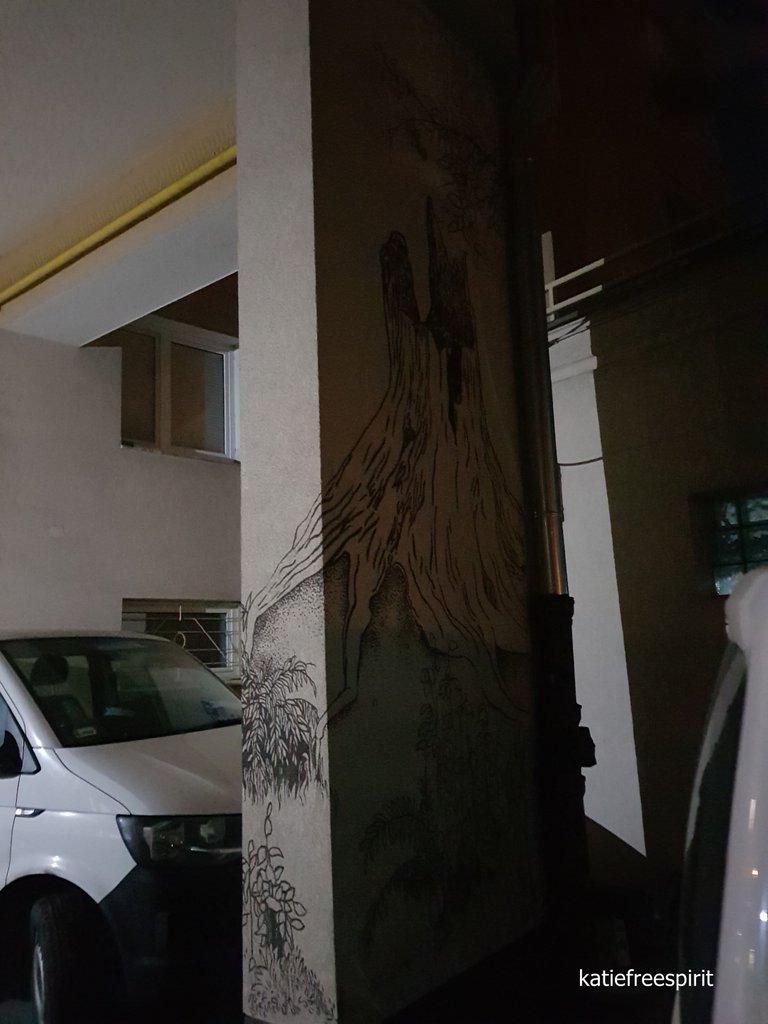
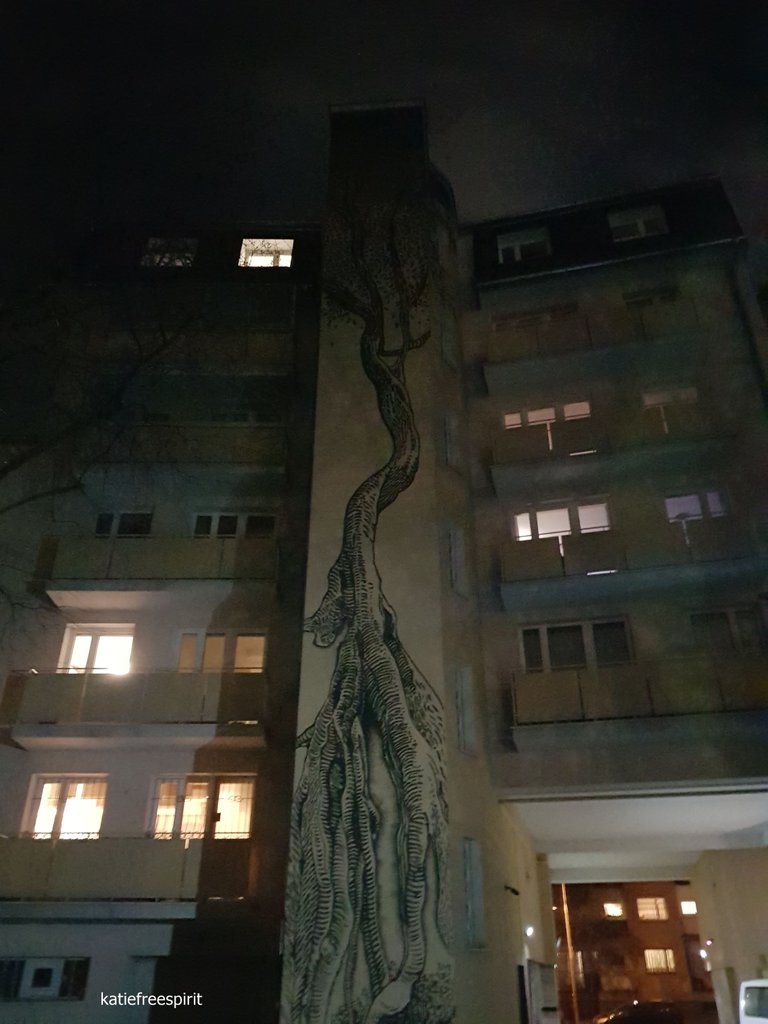
You can see Bobo on the wall below.
He is a supernatural creature from Polish folklore, probably a demon from Slavic beliefs. In Polish folk beliefs, bobo was a small, ugly, and malicious creature who was scared of children in order to discipline them. The mention of the bobo is found in the Dziadowa Peregrination from the beginning of the 17th century - according to it, the bobo was supposed to beat children and do various damages at home. He could be appeased with a food offering.
Source: Wikipedia
Na ścianie poniżej możecie zobaczyć Bobo.
To nadprzyrodzona istota z polskiego folkloru, prawdopodobnie demon z wierzeń słowiańskich. Innymi nazwami tej istoty są: bobok, babuk (Wielkopolska, Małopolska), babok, bebok (Górny Śląsk). W polskich wierzeniach ludowych bobo był małą, brzydką i złośliwą istotą, którą straszono dzieci w celu ich zdyscyplinowania. Wzmianka o bobie znajduje się w pochodzącej z początku XVII wieku Peregrynacji dziadowskiej – według niej bobo miał bić dzieci i czynić w domu różne szkody. Można go było przebłagać ofiarą z żywności.
Źródło: Wikipedia
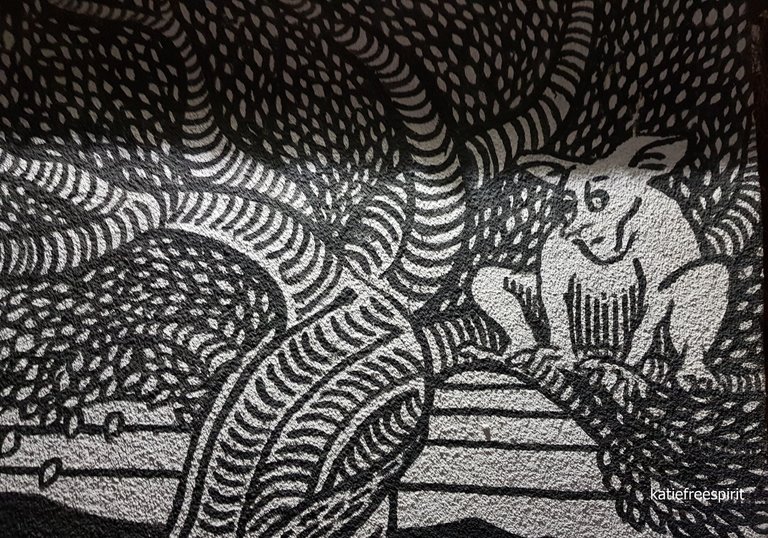
There is also a Boginka in the lower part of the mural.
Boginka (also dziwozona, mamuna, rusalka) - in the pre-Christian beliefs of the Slavs a female demon, personifying the forces of nature, hostile to people.
Source: Wikipedia
I admit that on the one hand, these murals are beautiful and, as I have already mentioned, it is wonderful that they depict Slavic deities, refer to local ethnology, on the other hand, these deities seem hostile to people, it is a bit fearful to live among them...
Na muralu, w jego dolnej części jest także Boginka.
Boginka (takżeː dziwożona, mamuna, rusałka) – w przedchrześcijańskich wierzeniach Słowian demon żeński, będący personifikacją sił przyrody, wrogi wobec ludzi.
Źródło: Wikipedia
Przyznam, że z jednej strony te murale są przepiękne i tak jak już wspomniałam cudownie, że przedstawiają słowiańskie bóstwa, nawiązują do lokalnej etnologii, z drugiej te bóstwa wydają się nieprzyjazne dla ludzi, aż trochę strach mieszkać wśród nich...
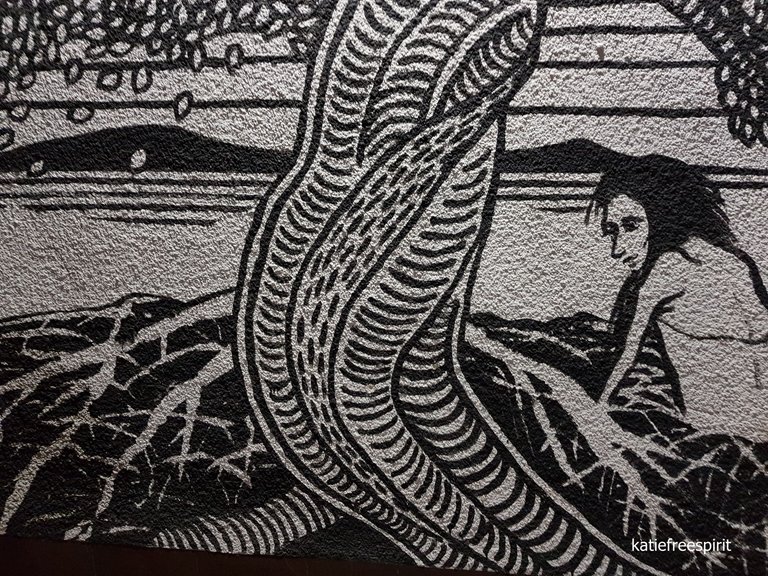
Among the Slavic deities there is also a mural referring to the times of the Second World War.
Między słowiańskimi bóstwami znajduje się także mural nawiązujący do czasów II Wojny Światowej.
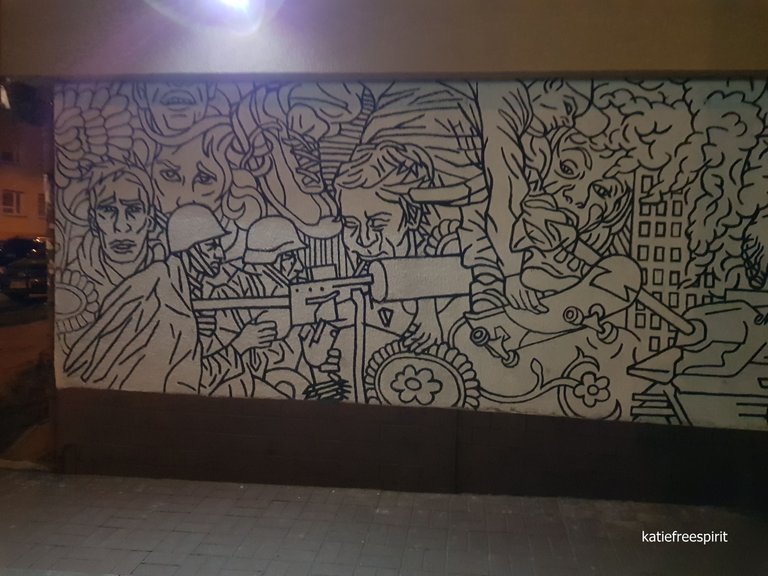
On these walls you can see other Slavic deities. They are: dziwozony, planetary, Świętowit and Swarożyc.
Na tych ścianach możecie zobaczyć kolejne słowiańskie bóstwa. Są to: dziwożony, planetnik, Świętowit i Swarożyc.
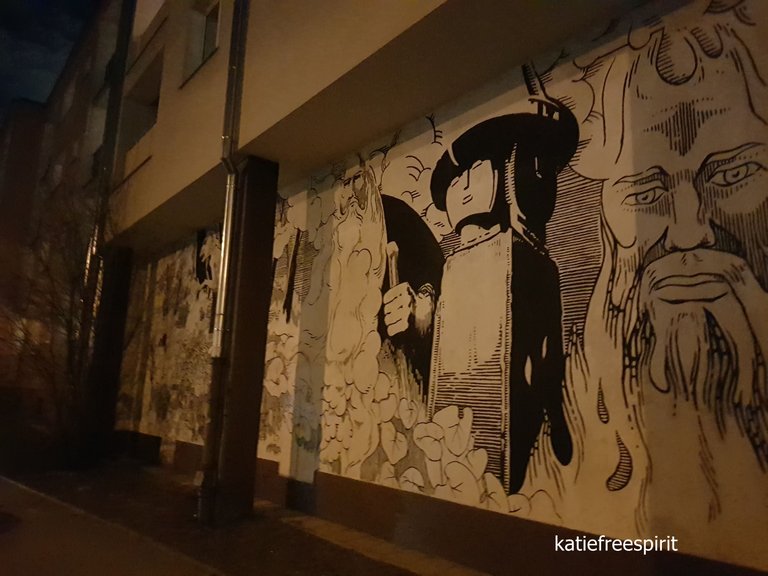
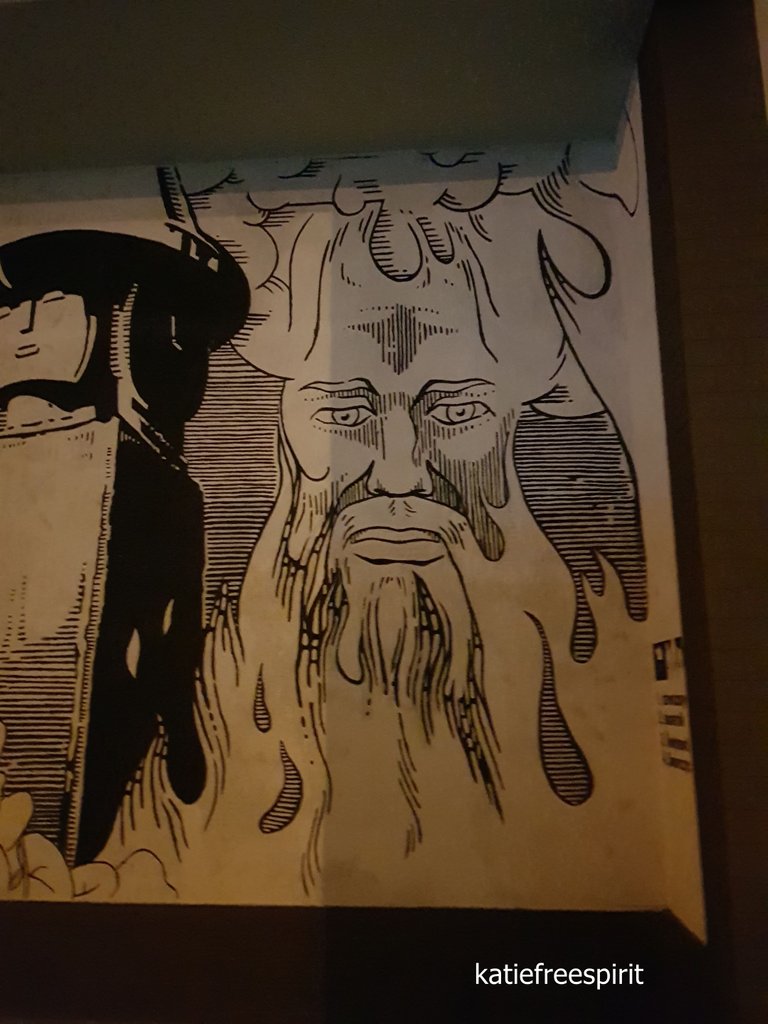
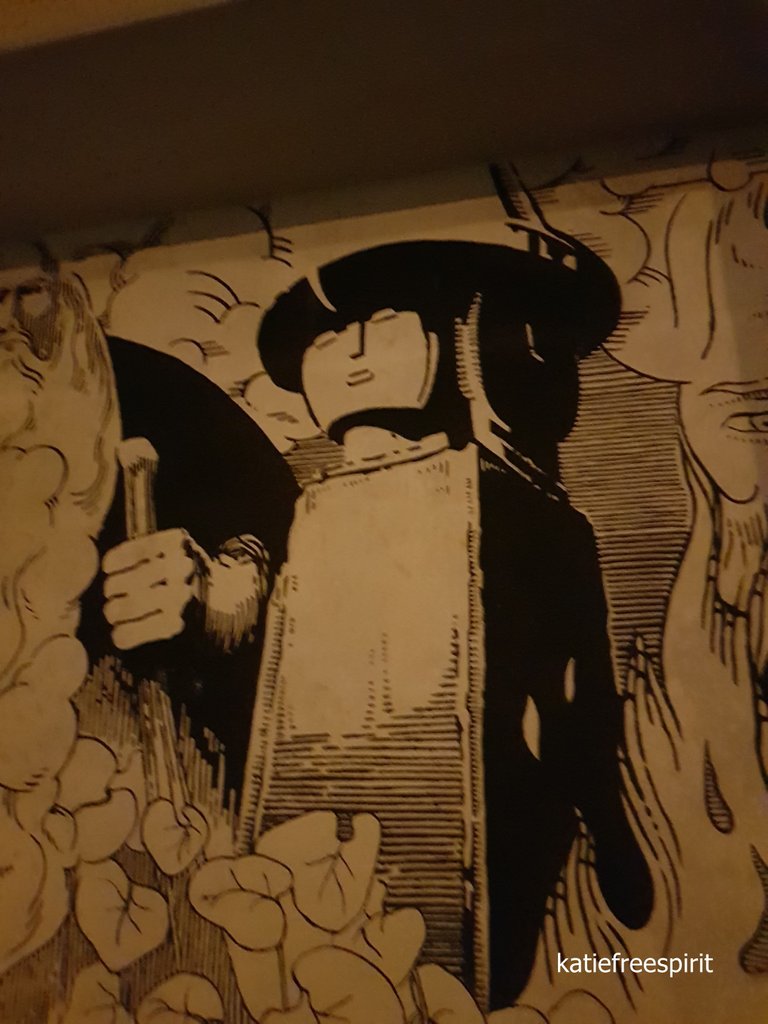
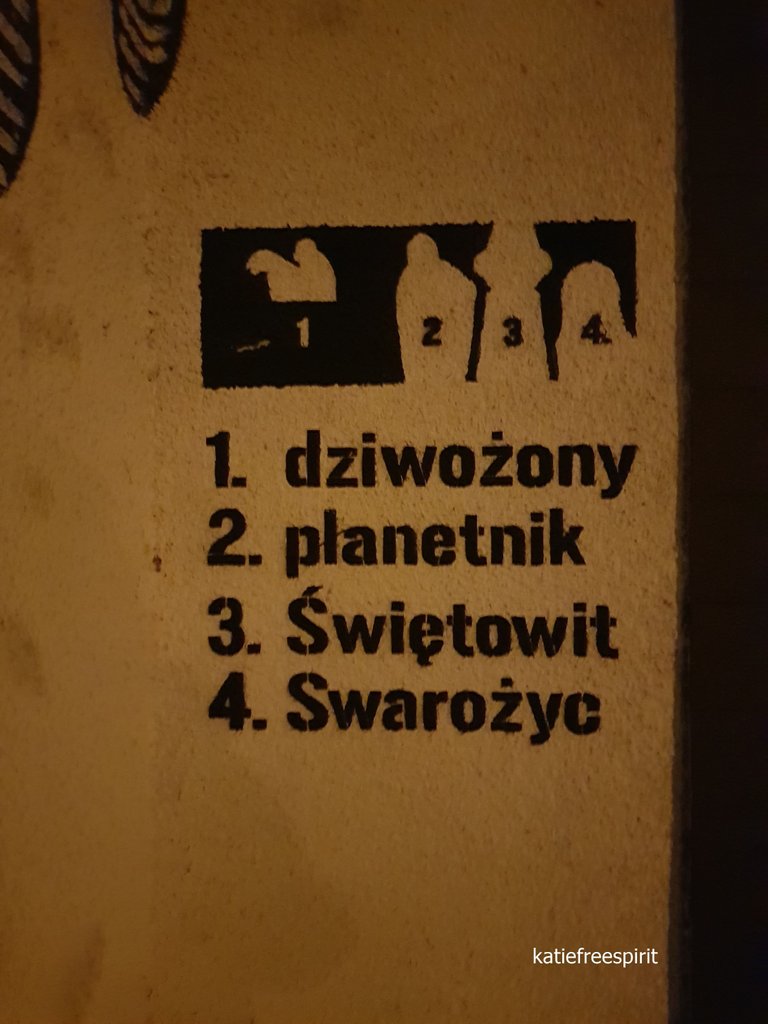
I admit that reading about these deities I learned a lot of interesting information. I really liked the deity - the planetary.
The Planetary (another name: cloud cover) - a character from Slavic beliefs, a demonic or semi-demonic creature personifying atmospheric phenomena. It was believed that the planetaries direct the clouds, sending storms and hail. The souls of those who died of sudden death and of suicides (mainly hangmen and drowned people) remained on the planets. They were imagined as tall old men in wide hats or as small creatures. Depending on the circumstances, the planetary could be either favorable or hostile to humans. Their favor could be gained by throwing flour into the wind or into a fire. Favorable planets descended to the ground and warned people of the storm and protected them from drought.
Source: Wikipedia
I like this deity. It's good to have a deity close to you that you can ask for help in changing the weather ;)
Przyznam, że czytając o tych bóstwach dowiedziałam się wielu ciekawych informacji. Bardzo spodobało mi się bóstwo - planetnik.
Planetnik (inne nazwy: chmurnik, obłocznik) – postać z wierzeń słowiańskich, demoniczna lub półdemoniczna istota uosabiająca zjawiska atmosferyczne. Wierzono, że płanetnicy kierują chmurami, zsyłają burzę i grad. Płanetnikami zostawały dusze zmarłych nagłą śmiercią i samobójców (głównie wisielców i topielców). Wyobrażano ich sobie jako wysokich starców w szerokich kapeluszach bądź jako małe stworki. Zależnie od okoliczności, płanetnicy mogli być ludziom przychylni albo wrodzy. Ich przychylność można było zyskać rzucając mąkę na wiatr lub do ognia. Przychylni płanetnicy zstępowali na ziemię i ostrzegali ludzi przed burzą oraz chronili przed suszą.
Źródło:Wikipedia
To bóstwo mi się podoba. Dobrze mieć blisko siebie bóstwo, które można poprosić o pomoc w zmianie pogody ;)
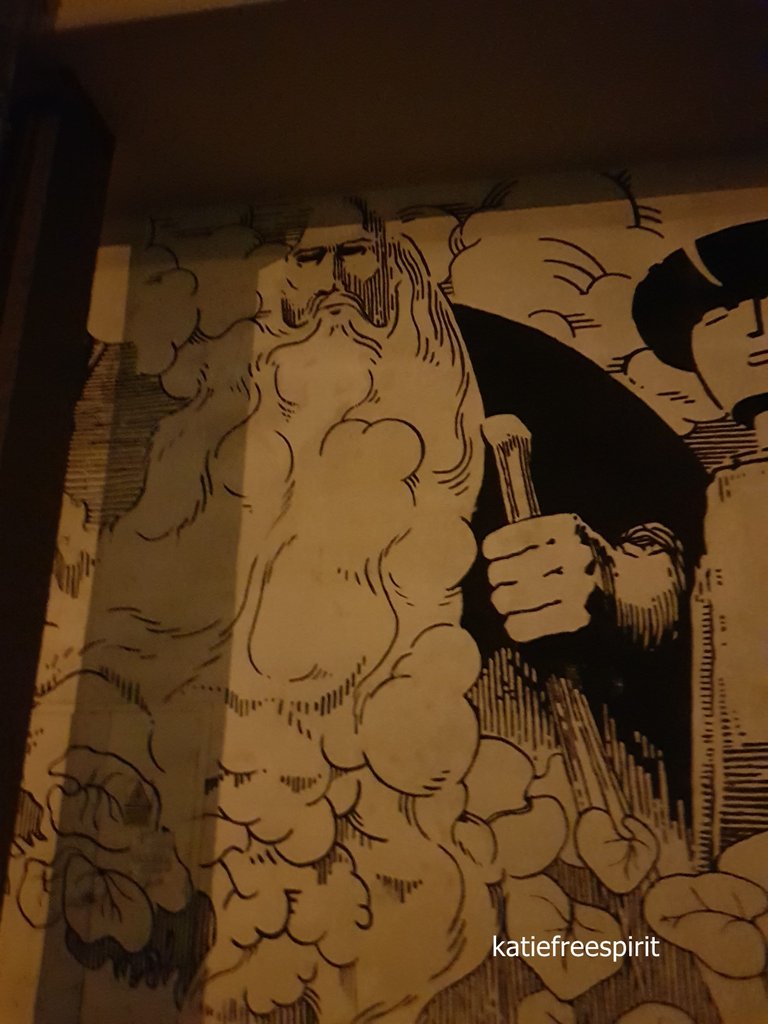
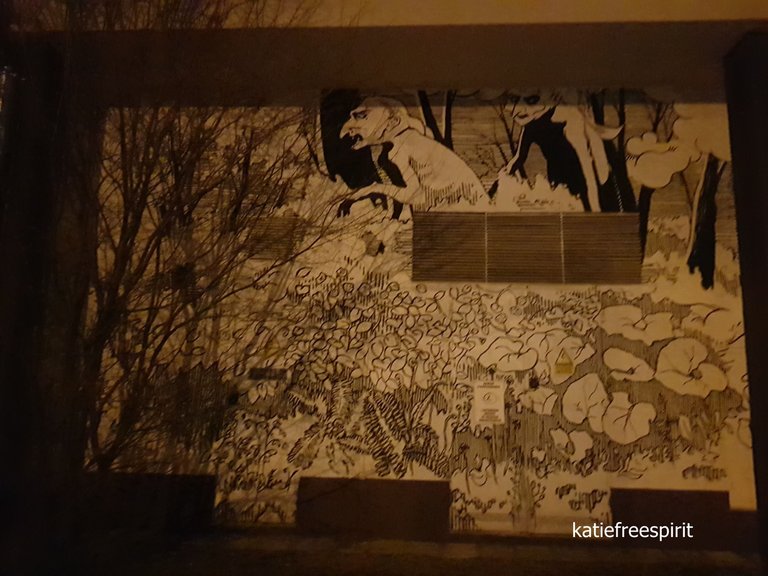
Where did the idea for such murals come from? It turns out that previously the walls of housing estates were often destroyed by vandals. The walls were painted over, but after a few days new inscriptions appeared on them. Someone came up with the idea to create murals with Slavic deities. The first mural was painted by Karol Radziszewski, a student of the Academy of Fine Arts, and it turned out that no one had demolished it. Thanks to this, new murals painted by professional artists were created.
A skąd wziął się pomysł na takie murale? Okazuje się, że wcześniej mury blokowisk były często niszczone przez wandali. Zamalowywano ściany, ale po kilku dniach pojawiały się na nich nowe napisy. Ktoś wpadł na pomysł, żeby tworzyć murale ze słowiańskimi bóstwami. Pierwszy mural namalował student Akademii Sztuk Pięknych Karol Radziszewski i okazało się, że nikt go nie zdemolował. Dzięki temu powstały kolejne murale namalowane przez profesjonalnych plastyków.
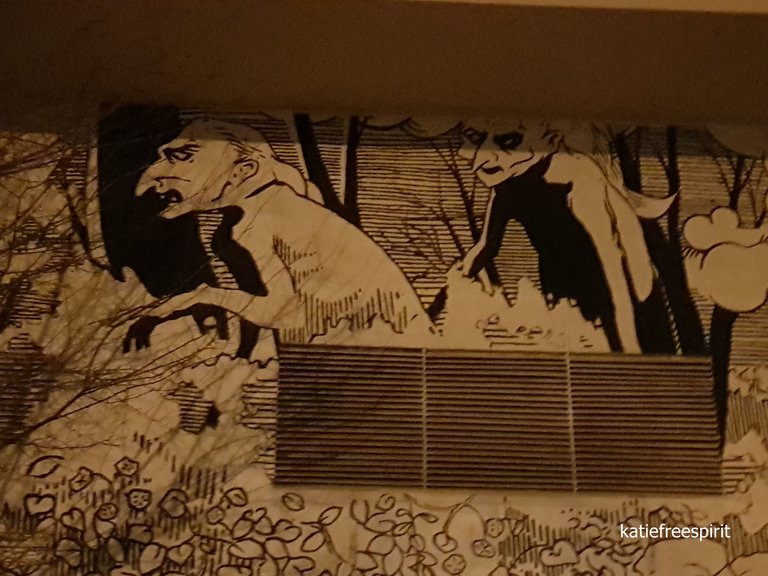
If Lord of the Rings Gollum and a Furby had a baby, it would Bobo, that is the most interesting thing in your post here and I do find all of these photos and all of these things to be quite intriguing. But especially Bobo with his elf-like ears. He looks part monkey and frog.
Cool idea! :)
A great idea to paint the walls to protect them from vandals. I hope that these vandals will not be tempted to destroy these paintings as well. Very talented those who drew, students. I know that there is a Polish tradition in such graphics, the famous posters from the 70s and 80s I think. I was a fan of Polish film and music from that period ... Wajda and Czesław Niemen, as far back as I can remember. There were of course more, I mean directors and actors ... I should try to remember.
It is nice to discover unknown places in your city.
Fortunately, this idea turned out to be successful. Murals have been around for a while and nobody has destroyed them :) It's nice that you liked Polish films of famous Polish directors. I also like those times, probably the most in terms of music. Music in the 80's and 90's and even the 70's was great. Sometimes I listen to old songs like that.
I am glad that this method gave good results. It should be expanded and used more often. I'm nostalgic for the 70's and 90's.
Congratulations, your post has been added to Pinmapple! 🎉🥳🍍
Did you know you have your own profile map?
And every post has their own map too!
Want to have your post on the map too?